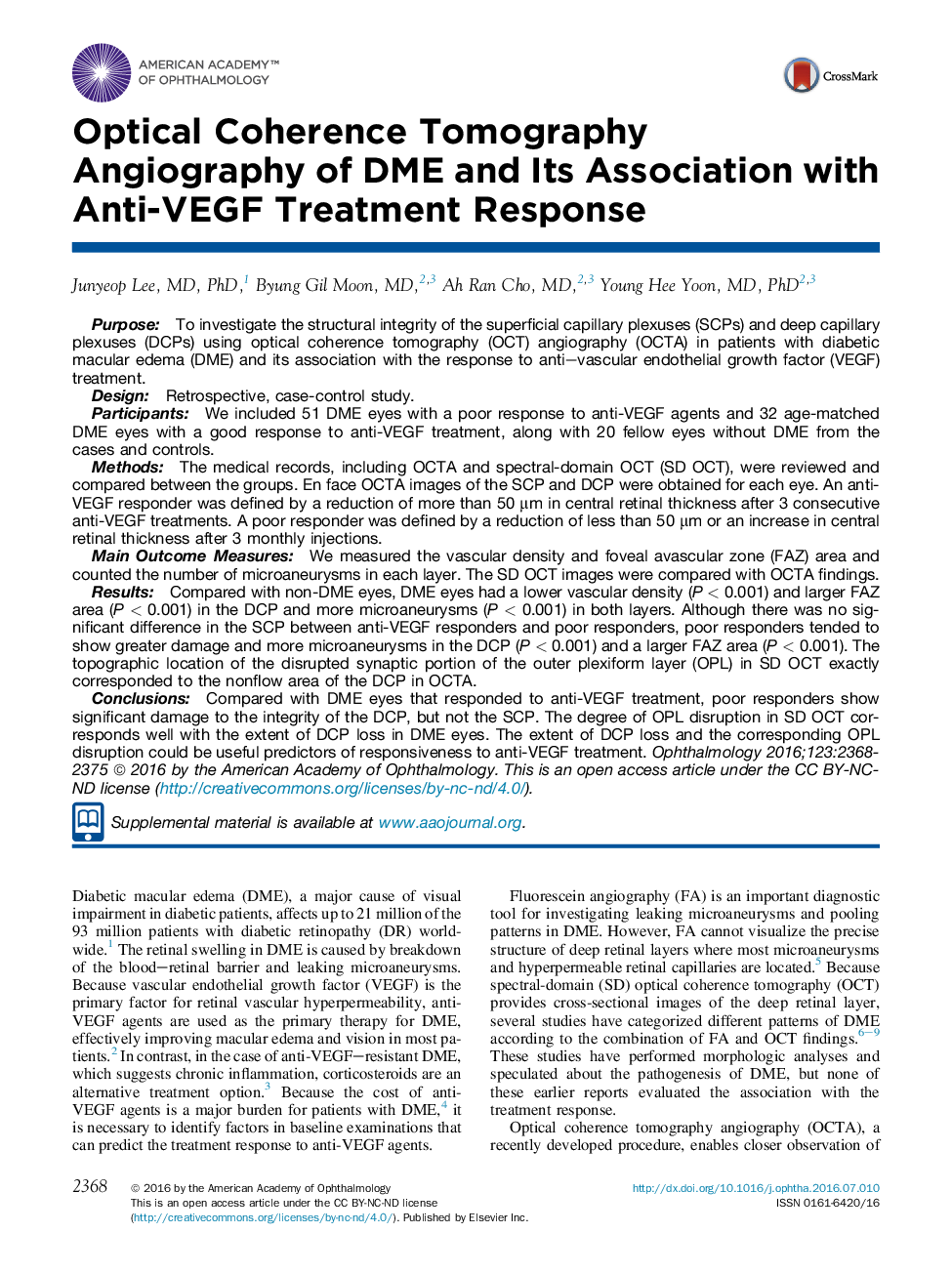| کد مقاله | کد نشریه | سال انتشار | مقاله انگلیسی | نسخه تمام متن |
|---|---|---|---|---|
| 5705577 | 1410744 | 2016 | 8 صفحه PDF | دانلود رایگان |

PurposeTo investigate the structural integrity of the superficial capillary plexuses (SCPs) and deep capillary plexuses (DCPs) using optical coherence tomography (OCT) angiography (OCTA) in patients with diabetic macular edema (DME) and its association with the response to anti-vascular endothelial growth factor (VEGF) treatment.DesignRetrospective, case-control study.ParticipantsWe included 51 DME eyes with a poor response to anti-VEGF agents and 32 age-matched DME eyes with a good response to anti-VEGF treatment, along with 20 fellow eyes without DME from the cases and controls.MethodsThe medical records, including OCTA and spectral-domain OCT (SD OCT), were reviewed and compared between the groups. En face OCTA images of the SCP and DCP were obtained for each eye. An anti-VEGF responder was defined by a reduction of more than 50 μm in central retinal thickness after 3 consecutive anti-VEGF treatments. A poor responder was defined by a reduction of less than 50 μm or an increase in central retinal thickness after 3 monthly injections.Main Outcome MeasuresWe measured the vascular density and foveal avascular zone (FAZ) area and counted the number of microaneurysms in each layer. The SD OCT images were compared with OCTA findings.ResultsCompared with non-DME eyes, DME eyes had a lower vascular density (P < 0.001) and larger FAZ area (P < 0.001) in the DCP and more microaneurysms (P < 0.001) in both layers. Although there was no significant difference in the SCP between anti-VEGF responders and poor responders, poor responders tended to show greater damage and more microaneurysms in the DCP (P < 0.001) and a larger FAZ area (P < 0.001). The topographic location of the disrupted synaptic portion of the outer plexiform layer (OPL) in SD OCT exactly corresponded to the nonflow area of the DCP in OCTA.ConclusionsCompared with DME eyes that responded to anti-VEGF treatment, poor responders show significant damage to the integrity of the DCP, but not the SCP. The degree of OPL disruption in SD OCT corresponds well with the extent of DCP loss in DME eyes. The extent of DCP loss and the corresponding OPL disruption could be useful predictors of responsiveness to anti-VEGF treatment.
Journal: Ophthalmology - Volume 123, Issue 11, November 2016, Pages 2368-2375